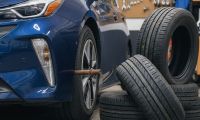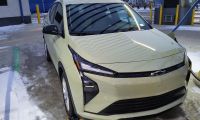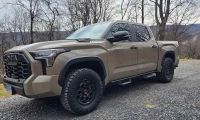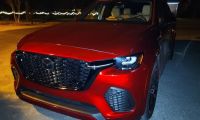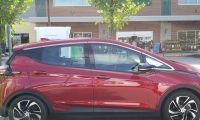How Does Regenerative Braking Work in Electric Vehicles And Tesla Vehicles?
Regenerative braking is one of the best features of an electric vehicle (EV). This allows the car to recover the kinetic energy when it slows down or when it is going down hill. When you "brake", you must slow down and that energy has to go somewhere - the brake pads.
In order to understand how the regenerative braking works, knowing how traditional braking works is helpful. A traditional braking system in a car is a brake pad that clamps on the wheel in order to slow the vehicle down. When you don't brake in a gas car, your car will generally just roll forward without much resistance other than wind or the tires on the ground.
The problem with this braking system is that the braking system gets worn down by being used and the energy used to slow down the car from the clamps slowing down the wheel gets wasted in the form of heat that simply goes out into the air.
Tesla vehicles take advantage of regenerative braking even though they have a standard braking system on the car, just in case you aren't able to use the regenerative braking to slow down. Many electric vehicles don't quite have the motor power to slow the car down - higher end Tesla vehicles can though.
The Details of Regenerative Braking
Kinetic energy is the energy of motion. Anything that is set into motion has kinetic energy, whether it is a baseball being thrown, or a car on the road moving forward. The key with regenerative braking is taking this kinetic energy and converting it into energy that can be put back into the battery, which will slow the car down - because you are taking away the kinetic energy of the vehicle.
Regenerative braking happens when you let off the pressure from the accelerator while you are driving forward. The electric motor in an EV is how this works. There is a stator and a rotor. The stator is the stationary part and the rotor is the part that moves and turns. The accelerator in an EV pushes current into the stator, creating a magnetic field, which then turns the rotor. Letting off the accelerator keeps the rotor turning and pushes current in the other direction, charging up the battery and reducing the kinetic energy of the vehicle.
When you hit the brakes in an EV, or you let your foot off the accelerator, or drive down hill, the process of taking energy from the battery to go to the motor and spin the wheels forward goes in reverse and charges the battery.
In an EV, you can capture the wasted energy and use it to charge up the battery. EV brakes don't wear out very often and not at all. This will extend your range in an EV and the EPA range in an EV includes regenerative braking. This creates simplicity in using mostly the accelerator to go forward and to brake, driving with just one pedal.
In fact, going down hill one time in my Model 3 RWD, I gained about 6% of my battery just from the regenerative braking happening. I barely had to touch the accelerator pedal and all the extra energy that would have made my car speed down the hill, was instead converted into energy that was used to recharge the battery.
Tesla vehicles are engineered to take advantage of regenerative braking. It is a brilliant technology.
You can see more information on regenerative braking here:
Leave your comments below, share the article with friends and tweet it out to your followers.
Jeremy Johnson is a Tesla investor and supporter. He first invested in Tesla in 2017 after years of following Elon Musk and admiring his work ethic and intelligence. Since then, he's become a Tesla bull, covering anything about Tesla he can find, while also dabbling in other electric vehicle companies. Jeremy covers Tesla developments at Torque News. You can follow him on Twitter or LinkedIn to stay in touch and follow his Tesla news coverage on Torque News.








